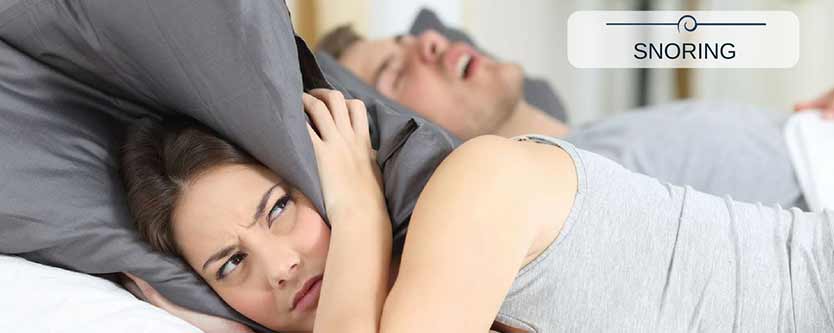Snoring is one of the most common problems we face in our life. Generally speaking, each one of us has an
[the_ad id=”6178″]experience with snoring at least once in our lifetime. In medical terms, snoring is defined as a loud noisy breathing during sleep without sleep apnea syndrome as we are talking here about simple snoring. Sleep apnea syndrome is another topic which needs a separate article. Snoring affects about twenty percent of the whole population and about sixty percent of males over forty years of age. Snoring is more common in males than females. In fact, snoring is a symptom not a disease in itself. In other words, snoring is a result of a certain underlying disease.
Causes: Causes of snoring are many as any disease that causes a partial obstruction of the airway can cause snoring. So, the causes of snoring are classified according to the level of airway obstruction as follows:
- Nasal
- Palatal.
- Tongue base
- Pharyngeal causes
Now, let us have an idea about these causes.
Nasal causes are many. Simply, these are any nasal diseases that cause partial airway obstruction like deviated nasal septum with its two types – the C-shaped deviation to one side and the S-shaped deviation which obstructs both the nasal cavities.
Hypertrophied nasal turbinates because of allergic rhinitis or nasal tumors. Sinonasal polyps which arise from the nasal sinuses and extend to the nasal cavity. These polyps can be inflammatory, allergic or neoplastic. Even a common cold attack can cause snoring due to inflamed swollen nasal mucosa partially obstructing the nasal airway.One of the rare nasal causes of snoring is neglected impacted foreign body inside the nasal cavity. It is common in young children and associated with persistent unilateral offensive nasal discharge.
Palatal causes include large redundant soft palate which vibrates with every breath during sleep causing a loud vibratory sound. In some cases, the redundant soft palate is associated with a long uvula which produces a continuous sensation of swallowing of something in the absence of having anything in the mouth.
Tongue base causes – simply when the tongue base is larger than normal it is narrowing the airway producing a snore.
Before talking about pharyngeal causes, it is better to understand a few physiological facts about the pharynx. The pharynx is a common pathway for food and air. The pharyngeal space is maintained by the muscle tone of pharyngeal dilator muscles. So, any cause that alters this tone will cause a collapse or at least a narrowing of the airway and will lead to snoring. Factors which alter the pharyngeal dilator muscle tone are excessive alcohol intake, sedatives and muscle relaxants, neuromuscular diseases and sometimes deep sleep.
Away from the muscular physiology of the pharynx, any space-occupying lesion can cause snoring. Enlarged tonsils, as seen in chronic tonsillitis, can produce snoring. Nasopharyngeal tumors and enlarged adenoids partially obstructing the airway also cause snoring.
One of the common causes of snoring is obesity. Condensation of fats under the skin around the neck and among neck organs and compartments narrows the pharyngeal airway.
Everyone suffering from snoring wants to end it for the well-known causes such as to stop driving the roommate crazy and also put an end to the daily headache and drowsiness. But, there are other risks you should know about.
Effects of Snoring:
Snoring has cardiovascular effects such as hypertension, arrhythmias and coronary heart diseases. To beat snoring, the underlying cause must be discovered. So, the airway must be examined.
Investigations and Management:
Nasal cavity and the nasopharynx can be examined by rigid endoscopy which can show septal deviations, sinonasal polyps, impacted foreign bodies and the enlarged adenoid tissue if any. The oropharynx and soft palate can be examined by simple inspection through the mouth. Flexible fiberoptic endoscope can also examine the airway. Polysomnography can be used in case of snoring associated with obstructive sleep apnea.
Source:

